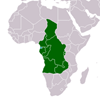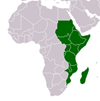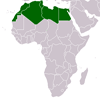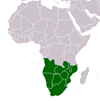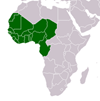Natural resources in Sub-saharan Africa
Natural resources in Sub-saharan Africa
This one of five background papers for the White Paper on Africa that the Swedish government will submit to parliament in early 2008. It starts with a discussion of the impacts of climate change on sub-Saharan Africa and the vulnerability of the region to such change as predicted by the fourth assessment report of the Intergovernmental Panel on Climate Change, released in February 2007. The report notes that by 2020, a projected 75-250 million people in Africa will be exposed to increased water stress due to climate change, with agricultural production severely compromised, local food supplies negatively affected and, towards the end of he 21st century, low lying coastal areas threatened by rising sea levels. Climate change may also impact on security, cause increasingly severe natural disasters and lead to increased out-migration from affected regions. More attention will need to be devoted to culminating impediments to economic growth if vulnerabilities to climate change are to e addressed. Even absent climate change, Africa is suffering rom water scarcity and the situation is worsening: 340 million people already lack access to safe drinking water and almost 500 Million, over half of all Africans, lack access to adequate sanitation. On the whole, countries in Africa are not on track to achieving the Millennium Development Goal targets on water supply and sanitation, with implications for, inter alia, child mortality and maternal health,. Africa has a multitude of transboundary water basins, which create special development challenges. Biomass accounts for nearly 60% of the primary energy supply and satisfies the cooking and heating needs of 90% of the population. This has consequences not only for deforestation but also for human health as a result of indoor air pollution. The continent has substantial hydropower potential only 7% of which is exploited. Electricity consumption is increasing and steps are being taken to improve power distribution through sub-regional power pools. As much as two-thirds of all arable land is estimated to be affected by delegation resulting from a variety of factors, including population pressure, inadequate or ambiguous land tenure rights, inappropriate farm technologies and insufficient extension support and research. Most African soils are difficult to manage sustainably, particularly as population pressure and other factors increasingly constrain traditional shifting cultivation. Deforestation has proceeded at an annual rate of 0,7% through the 1990s and at a some-what lower rate in 2000-05. Although there have been increases in the forest areas designated primarily for conservation and also for plantation forestry, progress towards sustainable forest management appears to have been limited during the las 15 years. Similarly, exports of forest products are declining, possibly reflecting a gradual depletion of prime log-producing areas. Africa is rich in oil and mineral resources, with West Africa the world's fastest growing source of oil and with new discoveries being regularly made. However, there has been little development dividend in the oil-producing countries, most of which suffer from bad (or very bad) governance. Some African countries, South Africa in particular, are leading producers of various minerals, and the role of oil and minerals in exports from sub-Saharan Africans increased during the 1990s.
CITATION: Holmberg, Johan. Natural resources in Sub-saharan Africa . Uppsala : Nordiska Afrikainstitutet , 2008. - Available at: https://library.au.int/frnatural-resources-sub-saharan-africa-3

